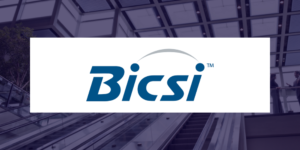Concert Technologies recently set a new industry benchmark for quality in technology rollout performance. Again. The benchmark is for “Done Right First-Time” (RFT) installation precision, with Concert achieving a measurement of 99.78% for Q1, 2017.
The new record supersedes the previous one of 99.65% – which was set by Concert in September 2016. The new benchmark is based on analysis of over 9,000 installations performed during the period January 1st to March 31st, 2017.
In this article, we will explore RFT in more detail, in order to understand how it relates to rollout quality performance.
What is “Right First Time” (RFT) and Why is it Important?
The RFT – aka the Zero Defect – metric, is used to measure system performance in quality management methodologies, such as Lean Manufacturing, or Six Sigma.
RFT reinforces the idea that defects are not acceptable, and that everyone should strive to “do things right the first time”. By following an RFT philosophy, you dramatically increase job profitability: both by eliminating the cost of failure, and by increasing revenue through improved customer satisfaction.
When RFT is discussed, a question often raised is whether it is truly attainable, or does it just set you up for failure? The answer is simple: RFT is not about being perfect, it is about changing your attitude to quality, which requires you to:
- Recognize the high cost of quality issues,
- Continuously think of the places where flaws may be introduced,
- Work proactively to address the flaws in your systems and processes that allow defects.
When it is used this way, RFT becomes the standard against which rollout performance can be analyzed. When zero defect becomes the goal, every aspect of your process can be subjected to scrutiny, to see if it measures up to that goal.
Why Apply the RFT Metric to Technology Rollouts?
RFT is applicable in this case because achieving scale in a multi-site technology rollout mandates that you minimize job variances from site to site, along with the disastrous impact they have on rollout schedule and cost.
As the inventor of the Maestro system of methodologies for mass-scale technology rollouts, Concert Technologies founder Dennis Mazaris is a long-time advocate for the application of established quality management metrics and methodologies like RFT, to Field Services work.
Mazaris says it best, “The Maestro system fuses our internal processes with elements of Project Management and Manufacturing Process Management best practice, to create a new model that virtually guarantees that the job is done right the first time – every time. It’s time that other rollout companies stopped blaming poor installation performance on Field Technicians, and instead ask themselves ‘what are we doing to put local resources in position to deliver a great installation experience?’”
How Do You Achieve Great Performance at Scale?
Andrew Crone, Concert Technologies Vice President of Operations, explains, “Our performance is the result of relentless focus on eliminating the variances that cause installation errors, and reduce consistency. Even though our error rate is under 3 in 1,000 we’re not satisfied. Our goal remains an error rate of zero.”
Crone continues, “We are able to achieve this level of performance because our Project Managers are expert practitioners in the technologies we deploy. They also take time to ensure that all customer requirements are fully understood, and that every aspect of a job’s logistics are synchronized before the Field Tech ever leaves for the site.”
This last step is critically important for a good RFT metric, because it mitigates the #1 cause of 2nd truck rolls for Field Services, per Aberdeen Group – ‘part unavailability’.
The Bottom Line: You Can’t Manage What You Don’t Measure
Delivering a successful multi-site technology rollout at scale is not easy. To perform at a high level it takes a significant investment in skilled management resources, along with the right processes, methodologies, and technology to support them.
But all this investment goes to waste if you don’t measure performance. If you don’t define and then monitor meaningful KPIs for your rollout performance, you have no way of managing your workload: either within a multi-site technology rollout, or across multiple rollouts. When you cannot manage workload effectively, variance can creep into job quality and the Customer Experience becomes volatile.
So, if you need to deploy new technologies at scale, and you want your customer experience to be a great one, you need to find a technology rollout company who will partner with you to manage the workload on your behalf. Before you begin your next technology rollout, ask your rollout company what quality metrics they use to manage and ask them to show you the data.
If you don’t like their answer, talk to us: we ‘d love to tell to you about the experiences we have gained from hundreds of thousands of successful technology rollouts, delivered over two decades. The proof of the value of our approach, is shown by our 99.78% “Done Right First Time” performance, as well as our industry-leading high customer satisfaction.




